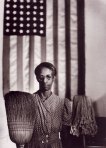
Schomburg Center for Research in Black Culture, Photographs and Prints Division, The New York Public Library. “Colord School” New York Public Library Digital Collections. Accessed May 8, 2018.

Schomburg Center for Research in Black Culture, Photographs and Prints Division, The New York Public Library. “Colord School” New York Public Library Digital Collections. Accessed May 8, 2018.

Charlotte Forten [Grimke], born into a prominent Free Black family in Philadelphia, came to Port Royal, South Carolina in 1862. She taught the newly freed people for a couple of years before returning North due to declining health. In 1878 she married the much younger Rev. Francis Grimke, nephew of ardent abolitionists Sarah Grimke and Angelina Grimke Weld. (Beaufort District Collection, Beaufort County Library)
Schomburg Center for Research in Black Culture, Photographs and Prints Division, The New York Public Library. "Lottie Grimke" New York Public Library Digital Collections. Accessed May 1, 2018.

Schomburg Center for Research in Black Culture, Photographs and Prints Division

Donna and the ATFA Appraisals team.
The transformation of photography in the last decades is nothing short of revolutionary — and has been driven largely by the marketplace in art photography that began in the 1970s. This panel [presented at the April 2013 Association of International Photography Art Dealers show in New York City] explores the 40-year-old photo market with leading experts.
Speakers: Catherine Edelman, Catherine Edelman Gallery, Chicago; Celso Gonzalez-Falla, chairman of the board, Aperture Foundation; Duane Michals, artist; Susanna Wenniger, senior specialist, photography, Artnet. Moderator is Jill Arnold, director, business development, AXA Art Insurance Corporation.
The collection of photographic prints and negatives produced by photographer and filmmaker, Gordon Parks, will be housed at the library of the State University of New York at Purchase. Currently held at The Gordon Parks Foundation, a division of the Meserve-Kunhardt Foundation, the collection contains 4,000 prints and 20,000 negatives, as reported by The New York Times. The State University of New York at Purchase will make the collection accessible to the general public and scholars.
The Parks collection is accompanied by 100,000 images of the Civil War produced by Matthew Brady, Timothy O’Sullivan, and Alexander Gardner, as well as a collection of photographs by fellow Life magazine photographer, Ed Clark, all overseen by the Meserve-Kunhardt Foundation.

I came across this archive on African diaspora photography today and thought you might be interested: The Texas African American Photography (TAAP) Archive
From TAAP’s website:
…TAAP provides a broad overview of African American photography in the urban and rural areas of Texas, spanning the period from the 1870s to the present and representing a variety of processes and makers. The Archive is unique in its comprehensiveness, and consists of over 50,000 photographic negatives and prints and more than 20 oral histories collected from African American photographers. Most of the items in the Archive have been donated by the photographers and their families, while others have been acquired from private collections…The TAAP Archive focuses on the growth and development of vernacular and community photography among African Americans in Texas. The material in the Collection elucidates the context of social gatherings, including weddings, funerals, Juneteenth parades, church services, high school and college graduations, neighborhood businesses, and day-to-day activities in African American communities around the state. In addition, the images chronicle social protests and political demonstrations. The Collection includes work by identified photographers from around the state as well as photographs by unidentified picture makers.
Contact the Archive at (214)-823-8824.